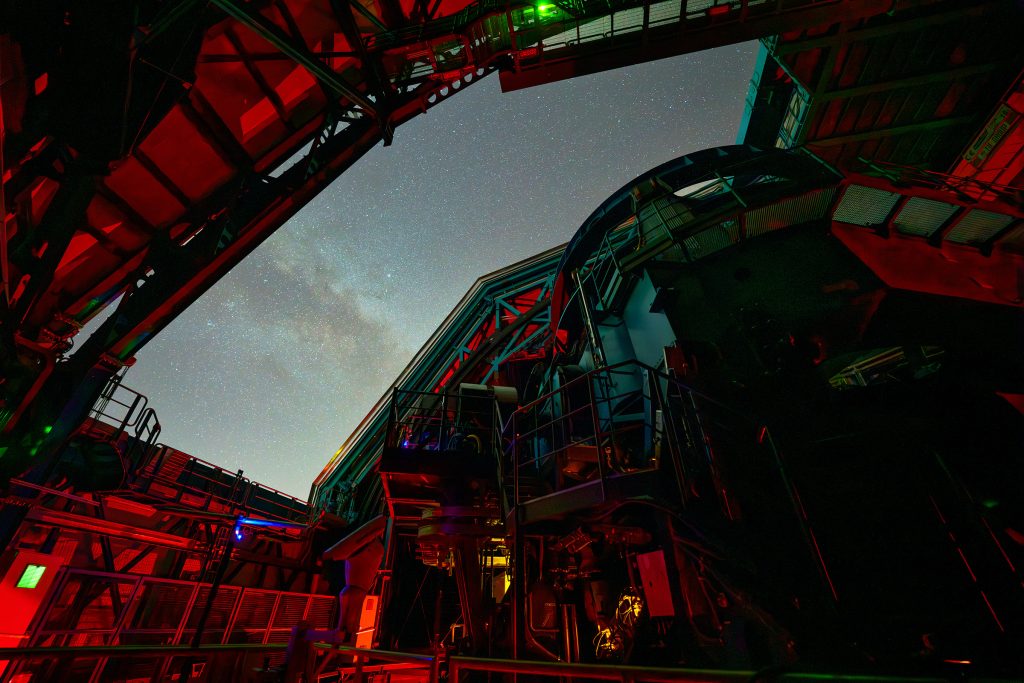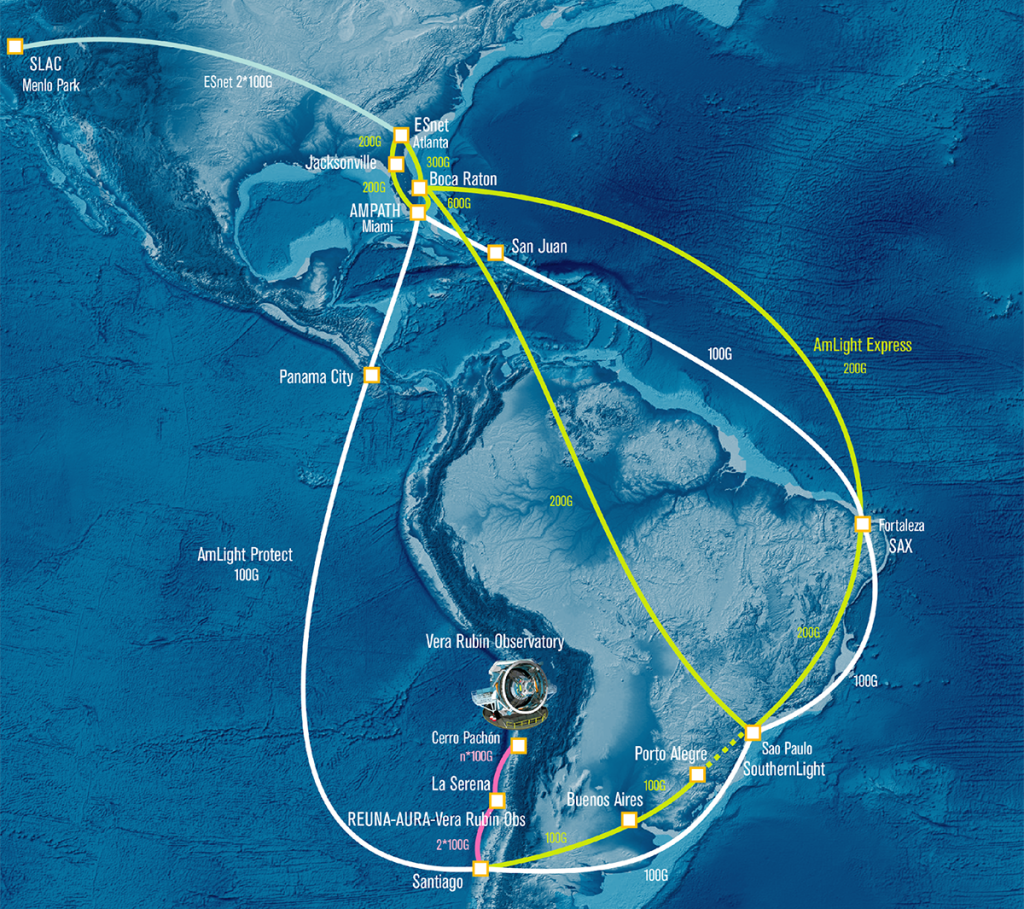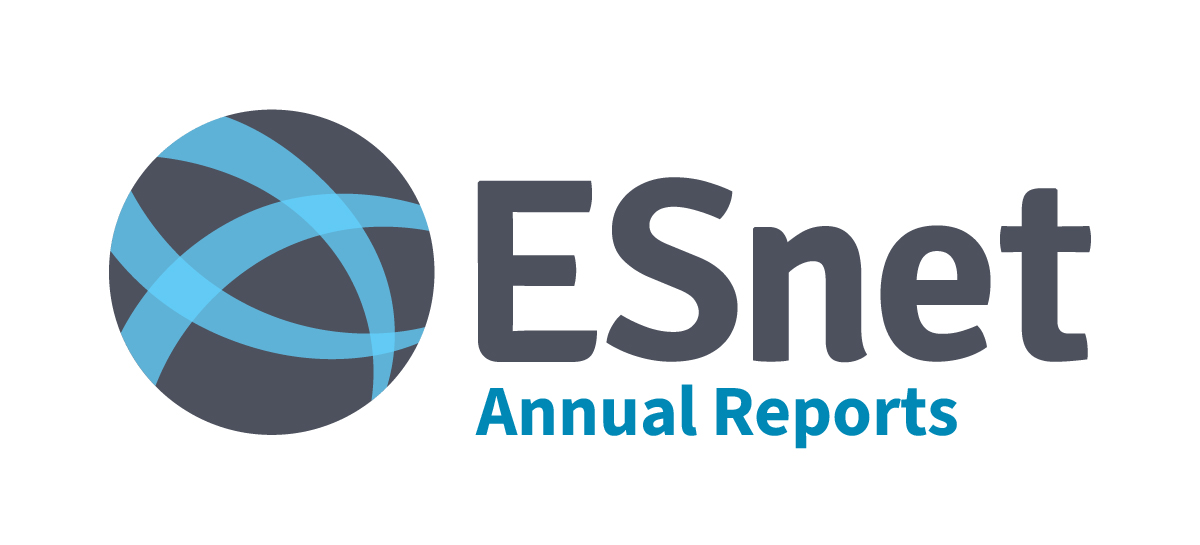
Helping to Power the Universe’s Fastest Sky Survey
RUBIN’S SIMONYI SURVEY TELESCOPE TAKING ON-SKY OBSERVATIONS IN OCTOBER 2024 WITH THE 144-MEGAPIXEL COMMISSIONING CAMERA TEST CAMERA. CREDIT: RUBINOBS/NOIRLAB/SLAC/NSF/DOE/AURA/H. STOCKEBRAND
In 2024, the Vera C. Rubin Observatory was nearing completion in Cerro Pachón, Chile, and preparing to transform astronomy with the Legacy Survey of Space and Time (LSST), a decade-long, ultra-high-definition time-lapse of the southern sky. Using the largest camera ever built (3,200 megapixels), Rubin will capture a 13 GB image every 30 seconds, each of which must reach the U.S. Data Facility at SLAC National Accelerator Laboratory within 7 seconds for rapid analysis and alerts to telescopes worldwide.
This is an enormous global networking challenge, and ESnet is proud to be a core partner in the Rubin Observatory Long-Haul Network — a 12,000-mile, high-reliability data path spanning Chile to California. The participating networks include REUNA, the NREN of Chile; the NSF-funded Americas-Africa Lightpaths Express and Protect (AmLight-ExP); RNP, the NREN of Brazil; rednesp, the NREN for the State of Sao Paulo; RedCLARA, the regional R&E network for Latin America; Florida LambdaRail, the regional network of Florida; Internet2; and ESnet.

The Long-Haul Network guarantees 40 Gbps end-to-end service with redundant, diverse routes into ESnet’s backbone, ensuring high availability. ESnet also connects SLAC to Google Cloud for the Rubin Science Platform and to European data centers for additional processing.
From October to December 2024, Rubin engineers conducted on-sky tests with the 144-megapixel Commissioning Camera (ComCam). ESnet and partner networks successfully transported the data in real time, confirming that the Long-Haul Network’s performance, software stack, and security systems were ready for the real thing. ESnet’s High-Touch telemetry project provided deep visibility into traffic flows, yielding valuable insights into the network performance.
With the Long-Haul Network standing by, Rubin is ready to begin full-scale operations in 2025 — and ESnet will be there every night, ensuring cosmology’s most ambitious survey can capture the sky at the speed of discovery.
